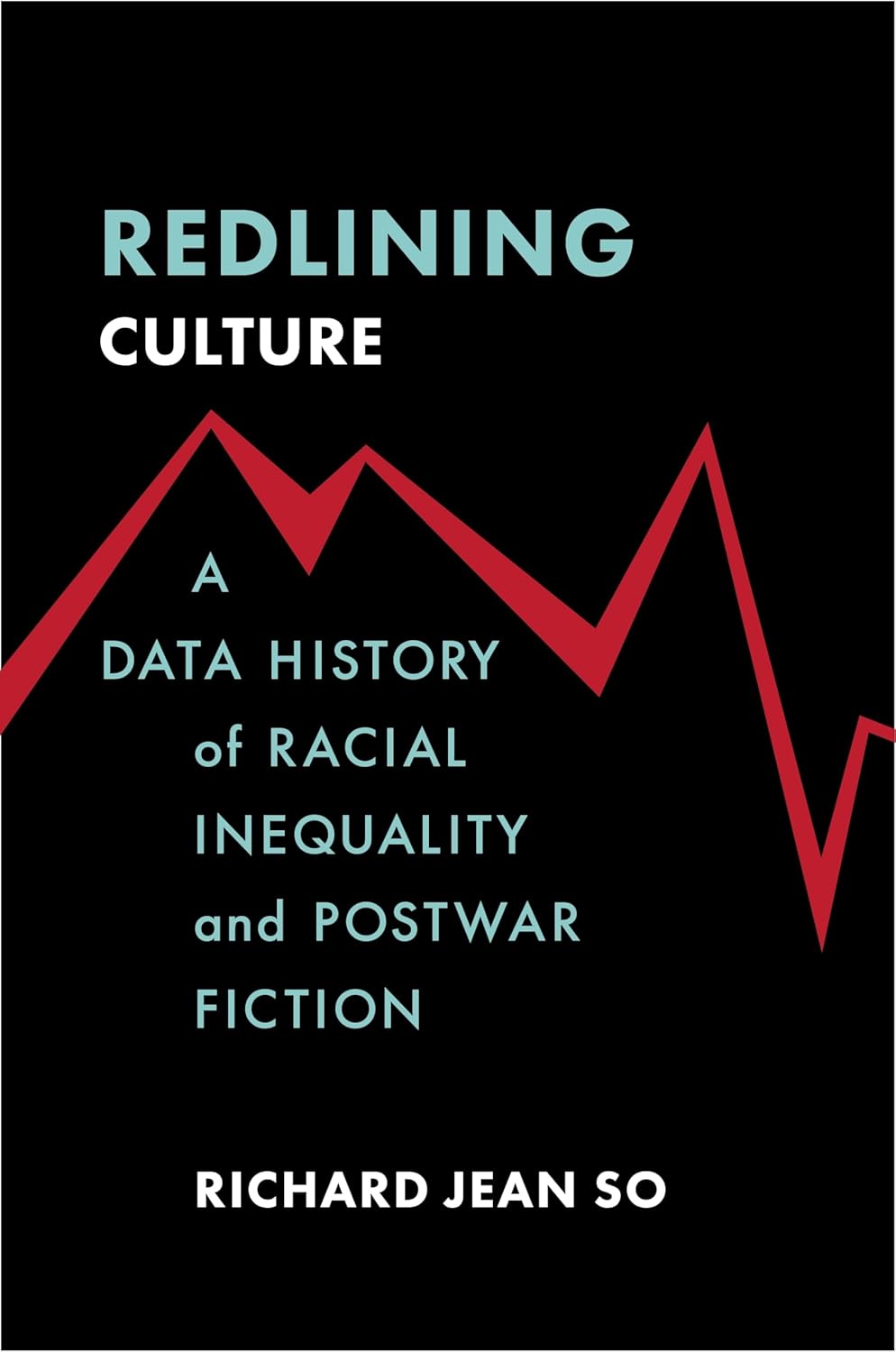Rosemarie Ho: One of the findings in your book that I found really interesting was that postwar US fiction written by white authors is generally “a reflexive…narration of what it’s like to be a white person writing novels in the time of a growing racial diversity,” preferring “adverbs and modal verbs, indicating a version of reality defined by qualification and conditionality.” You also compare this to the corpus of Black literature written in the same period, and found that the latter is more distinguished by lexical diversity and dialogue. Can you talk more about your methodological approach? Can we really measure literary whiteness?
Richard Jean So: One thing I really wanted to do is try to get an account of cultural or literary whiteness: What does that really look like? I think sociologists have done this more through case studies—through interviews, they’ve noticed some traits—but I want to do this more at scale. I quantify that in different ways. I’m using two methods: one that looks at the way that white versus Black writers tend to describe white people, and I find a set of collocations or terms that tend to be used to describe people in stories. The second, slightly different method compares novels written by white authors, primarily best sellers and prize winners, versus novels written by Black writers. The two analyses converge on the same thing, which is: There’s a kind of recursiveness inherent to white texts. Which is to say whiteness is very interested in itself.
The major takeaway is that we can use machines to identify a white cultural voice. I think that’s important because people might believe one doesn’t exist or might think that’s too abstract. Whereas I want to say like, no, it’s real; whiteness is a kind of culture. It has a relationship to blackness. Sara Ahmed argues that a big part of whiteness is narcissism. I think that the data really bears that out—that white narcissism is really a thing that has certain qualities and a historical trajectory. And when we think about the cultural field, like best sellers, prizewinners—they also have a distinct white voice that’s very different from Blackness. And what really defines both of those categories is their whiteness, and how they, in some ways, are anti-Black in terms of their style, or their form, or the things that they care about. That’s something that we might have intuited before, but we weren’t quite clear about that.
